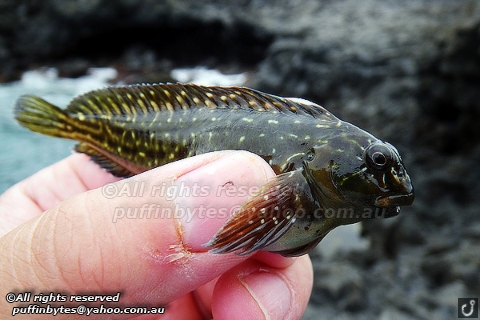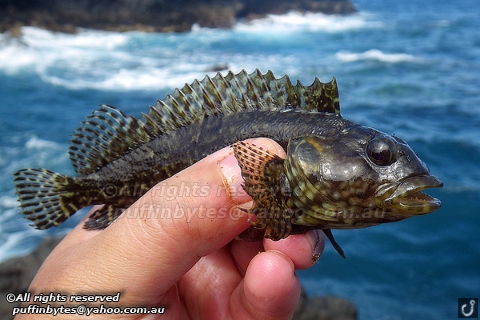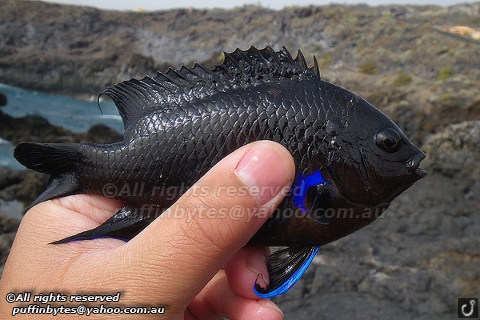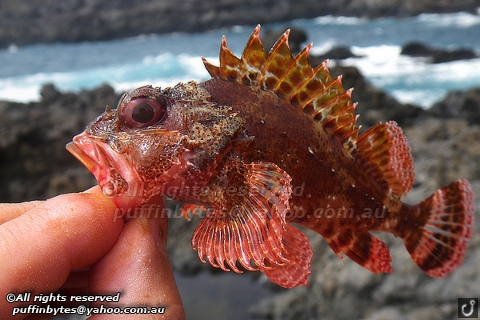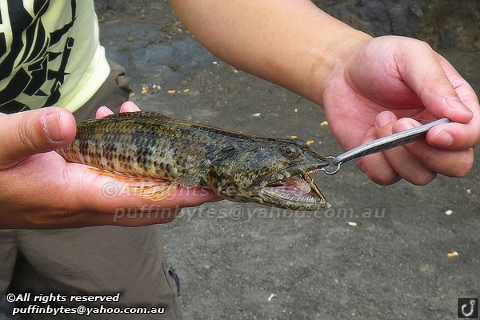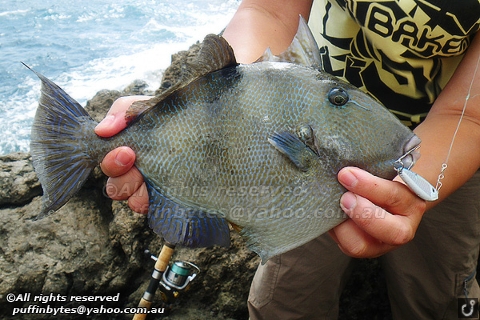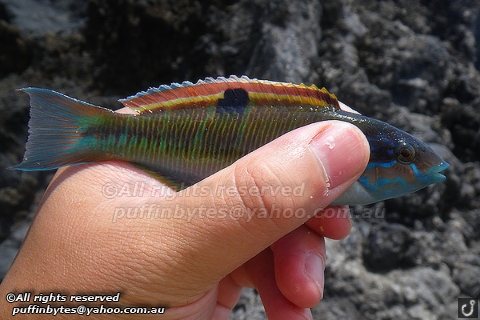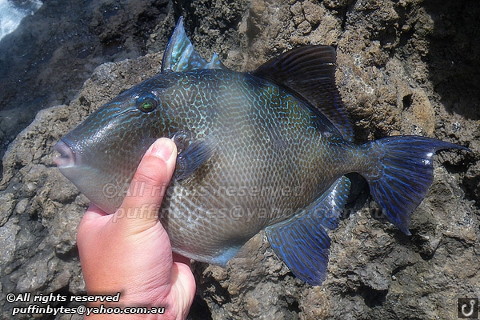
Bastard Grunt - Pomadasys incisus #98

Bastard Grunt - Pomadasys incisus - check out the dorsal fin
On the 11th, fished the Caleta again because of its short distance away hoping to finially catch something different. Again I couldn't get away from the Canary Damsels and Ornate Wrasse. I did get a few really nice looking males wrasses though and managed to get another single Hairy Blenny. I even riggged a whole prawn on a pennel rig on number 1 hooks but still managed hook a tiny canary damsel on it. After a while I did manage to hooked into something different. It was a nice looking puffer that i had seen snorkelling the previous day called a Guinean Puffer which is commonly mistaken for the Band-tailed Puffer (Sphoeroides spengleri) which occurs in the West Atlantic. It has what looks like spikes when seen in the water, but I dont think I felt them when I was handling this one. Towards the end of the session and as I was getting bored, I found a nice red rock crab. (a species recently split from Grapsus grapsus sometimes called the Sally Lightfoot.) I found that it really liked my prawn bait as well and chased it when I casted towards it and managed to catch it. Its a splendid looking beast when holding it infront of you.

Ornate Wrasse - Thalassoma pavo - this one is a male.

Guinean Puffer - Sphoeroides marmoratus #99
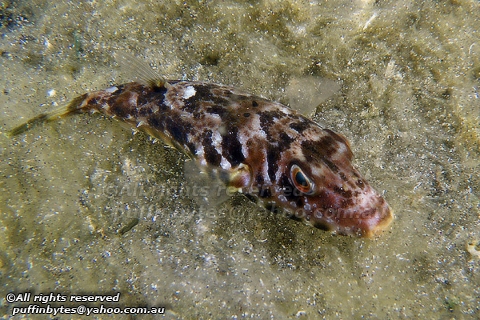
Guinean Puffer - Sphoeroides marmoratus
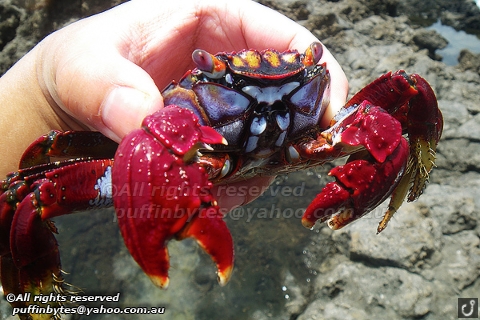
Red Rock Crab - Grapsus adscensionis
So after a week of fishing, I decided to pack up and clean all of my gear that night so that it was clean and dry when it had to go into the luggage but I did leave out my fly rod, line and flies so that I could have a quick flick in the morning, and thats exactly what I did. I had gotten a nice #8 6ips (inches per second) sinking line specifically for this purpose. I went straight to the Caleta in the morning to test this out. Tied on a clouser and found that I was able to cast quite well. I was actully casting as far as I could cast a 3oz lead. The line that I was stripping out got caught on the very sharp rocks at my feet a few times and since I didn't have a bucket, I had to keep very large loops in my hand but it was really good to be able to cast the amount of line I was casting out, even though I didn't hook into anything. I tried about 5 different types of flies but got tried. I then tried to cast tiny flies into the rockpools. The larger 4" blennies followed each time but would turn away at the last possible moment. I did try a few flies but wasn't able to hook into any. Time to called it the day. It was great fun to be able to fly fish in the sea as I don't really ever get a chance back in England.
In the end, I caught 11 species of fish, 9 of those lifers and a new species of crab. Not bad at all. I'd also like to mention that I didn't eat any of the fish and they all went back into the sea!
So I'm one species away from catching 100 species.
Grand Total:
2010: 36 species, 18 new species
Life: 99 species, 81 with photos
